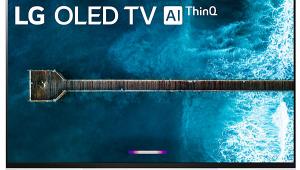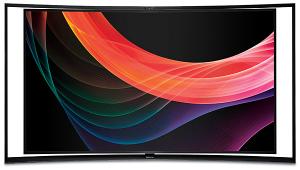LG Signature OLED65G6P OLED Ultra HDTV Review LG And Dolby Vision
In the briefing prior to our testing of the sets, LG and Dolby representatives spoke on behalf of their new sets and Dolby Vision, respectively. Among other advancements, LG described the OLEDs’ Enhanced Pixel Dimming. It wasn’t clear what that means, as dimming of the actual pixels is inherent in a self-illuminating technology like OLED (it resembles plasma more than LCD in that respect). The new OLEDs were also said to cover 99 percent of the P3 color gamut, an improvement over last year’s models. For those who wonder about the even wider BT. 2020 gamut standard supposedly supported by Ultra HD Blu-rays, no current consumer set can get anywhere near it as yet. P3 is the gamut used in digital cinema, and it’s wider than the standard HD Rec. 709 gamut.
LG’s Bit Depth Enhancement (BDE) was said to improve the transition from total black to near black. And because of OLED’s unsurpassed black-level performance, LG’s OLEDs were said to be capable of 20 f-stops of dynamic range versus 14 stops for LCD—an important argument for why LG says that OLED’s inability to hit the high peak- white values of LCD models isn’t meaningful.
There are now five lines of OLED TVs from LG, including the EG9100 carried over from 2015. The Signature G6, evaluated here, is the flagship and is flat, as are the new B6 and E6 series; the C6 series is curved. The new models are distinguished from the G6 by their physical design and features but are said to offer the same video performance. Apart from the 65-inch Signature G6 at $7,999 and the 77-inch version at $24,999, no prices were announced as of press time. They may be by the time you read this.
Dolby personnel then stepped on stage to discuss the merits of Dolby Vision, the HDR format now added to all new LG sets (in addition to the existing HDR10). It was said to be an end-to-end format, with specifications and tools for content production, grading and post-production, mastering and encoding, distribution, and playback. While about 50 titles from seven studios have been mastered in Dolby Vision as of this writing, they’ve only been distributed to date either theatrically (in the new Dolby Cinema–equipped theaters) or through a limited number of streaming services, such as Vudu. Dolby did state, however, that Dolby Vision titles on UHD Blu-ray are coming, which should give us reliable Dolby Vision content for evaluating displays.
A critical difference cited is that Dolby Vision always uses dynamic metadata to optimize the picture from scene to scene. According to Dolby, the competing HDR10 uses static metadata, which results in more restricted performance.—TJN


























































